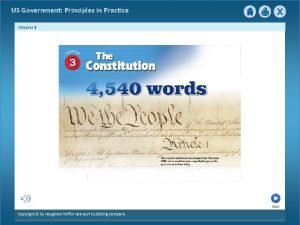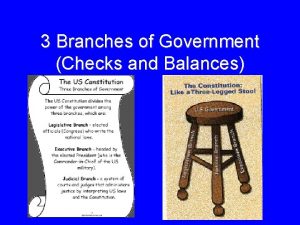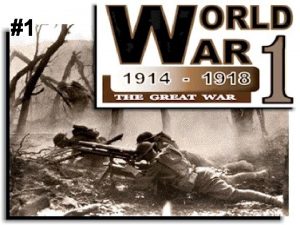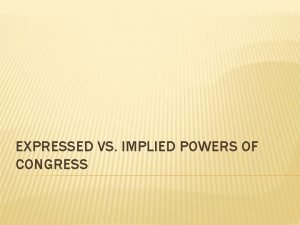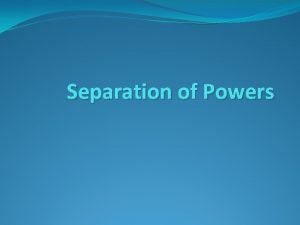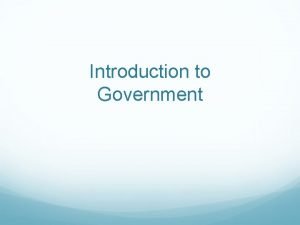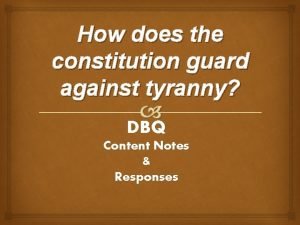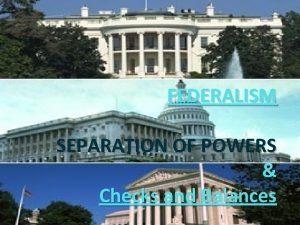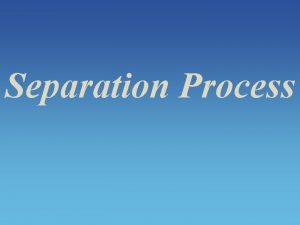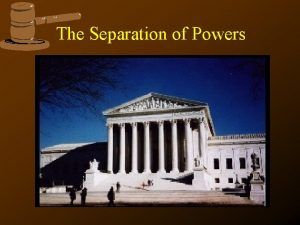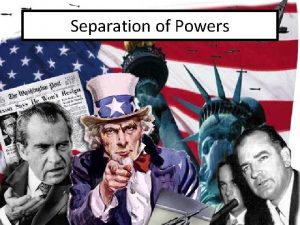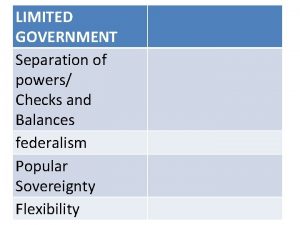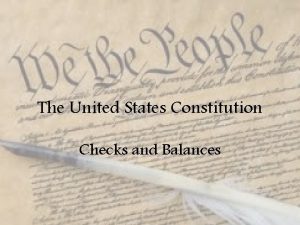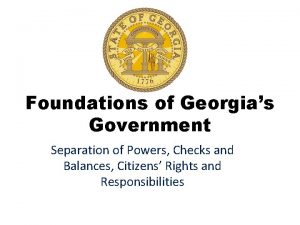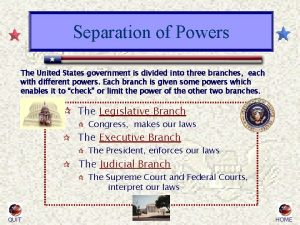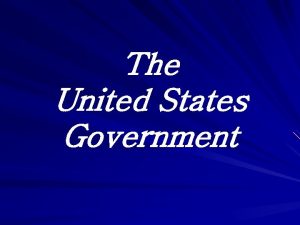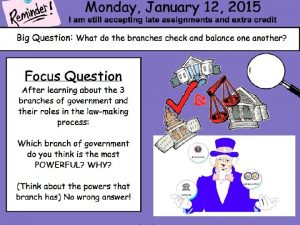United States Government Separation of powers Checks and











- Slides: 11

United States Government

Separation of powers


Checks and balances n n President commands armed forces, but only Congress may declare war or vote money for troops. Bills must be signed by president to become law. Congress can override veto by passing bill again with 2/3 majority in each house. Supreme court can declare a law unconstitutional.

Comparison between US and Canadian government; Executive branch n Canada: executive power held by prime minister and n cabinet; U. S. A. : power held by one person Canada: cabinet ministers are Members of Parliament and responsible to legislature; U. S. A. : president is separate from Congress and not responsible q n Demonstrated in manner of elections Canada: head of state is governor general; U. S. A. : president is head of state and government

Canadian and American legislatures

Canadian and USA legislative differences n Elections q House of Commons n n q elected for a flexible term of up to five years May reverse executive decision by a simple majority House of Representatives n n elected for a two year term Can override presidential veto by two-thirds vote (both houses)

USA and Canadian legislative Government bills differences n q Parliament n q Congress n n important bills drawn up by Cabinet debated between two houses, president recommends legislation Houses of Government q Canadian Senate n q little power American Senate n n more powerful house Elected, one third elected every two years Int’l treaties must be ratified by 2/3 s senate Approve or reject president’s appointment of Supreme Court judges, ambassadors and cabinet ministers

USA and Canadian Judicial Branches n n Responsible for interpreting and applying country’s laws Canada q q q n Unitary system with division of civil (provincial) and criminal (federal) laws Judges appointed by federal government Supreme Court appointed to age 75, can overrule any gov’t action that infringes Charter of Rights and Freedoms USA q q Dual court system federal and state courts Supreme Court appointed for life, final court of appeal

Constitution: fundamental framework of rules and n Canada regulations q q n Written and unwritten Constitution Acts of 1867 and 1982, Charter of Rights and Freedoms U. S. A. q q “The Constitution” Bill of Rights

Strengths and Weaknesses n Canada q q n Amendments can be made to bills if directly related to subject of legislation Responsible government results in instability Cabinet very powerful More democratic U. S. A. q q Any amendments can be made to bill to enable passing Staggered terms of office and set election dates reduce popular control Checks and balances produce deadlock More liberal
 Separation of powers and checks and balances
Separation of powers and checks and balances Was the united states on the axis powers or allied powers?
Was the united states on the axis powers or allied powers? Us history regents essay
Us history regents essay United states government: principles in practice solutions
United states government: principles in practice solutions 3 branches of government checks and balances
3 branches of government checks and balances The central powers ww1
The central powers ww1 Expressed powers and implied powers
Expressed powers and implied powers Aristotle on separation of powers
Aristotle on separation of powers Principle of separation of powers
Principle of separation of powers How did the constitution guard against tyranny answer key
How did the constitution guard against tyranny answer key Us congress
Us congress Whats separation of powers
Whats separation of powers



